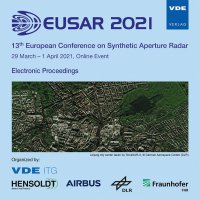Range Ambiguity Smearing and Suppression: Comparison of Different Azimuth Phase Codes and Opportunities from Multi-Focus Post-Processing
Konferenz: EUSAR 2021 - 13th European Conference on Synthetic Aperture Radar
29.03.2021 - 01.04.2021 in online
Tagungsband: EUSAR 2021
Seiten: 5Sprache: EnglischTyp: PDF
Autoren:
Dell'Amore, Luca; Nogueira Peixoto, Maxwell; Villano, Michelangelo; Krieger, Gerhard (German Aerospace Center (DLR), Microwaves and Radar Institute, Wessling, Germany)
Inhalt:
Synthetic aperture radar (SAR) remote sensing has become very attractive in Earth observation applications, since it provides high resolution imaging independent of weather conditions and sunlight illumination. However, the design of a SAR system is still constrained by nadir returns and range ambiguities, which can strongly corrupt the quality of the SAR image, if not avoided. Recently, a novel SAR concept, named waveform-encoded SAR, based on pulse-to-pulse variation of the transmitted waveform and on a dual/multi-focus post-processing, has been proposed in order to cope with these ambiguities. While some implementation issues related to waveform variation are still under analysis, this work investigates the potentialities of a thresholding and blanking approach for suppressing range ambiguities and a simpler variant, where waveform encoding is replaced by azimuth phase coding and multi-focus post-processing is always performed. In particular, real TerraSAR-X data are exploited to simulate and assess the range ambiguity smearing capability of a “Doppler-matched” azimuth phase code as well as of a waveform-encoded SAR. First results show that range ambiguity suppression through this approach is only effective for very strong ambiguities.


